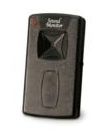 BloostonLaw Telecom Update Published by the Law Offices of Blooston, Mordkofsky, Dickens, Duffy & Prendergast, LLP [Reproduced here with the firm's permission.] www.bloostonlaw.com |
| Vol. 14, No. 46 | December 7, 2011 |
 FCC Releases Data Regarding CAF/ICC Further Notice In its Connect America Fund (CAF)/Intercarrier Compensation (ICC) Further Notice of Proposed Rulemaking (FNPRM), the FCC proposed a specific methodology to be implemented no later than July 1, 2012, for calculating individual company limits on loop costs for high cost loop support (HCLS) using a regression analysis. To assist the public in evaluating and commenting on the impact of that proposed methodology, the Wireline Competition Bureau (WCB) is releasing data that can be used to reproduce the regression analysis and the output of that regression analysis, i.e . the proposed limits for loop costs for individual companies for purposes of calculating HCLS in 2012. The data may be accessed at http://fcc.gov/encyclopedia/rate-return-resources under the heading “Connect America Fund FNPRM Appendix H Data [zip file].” In addition, as part of the Commission’s ongoing efforts to make data regarding universal service funding more accessible to the public and in formats useful to the public, the WCB is releasing maps showing: (1) which study areas are “rate-of-return” or “price cap,” available at:
http://fcc.gov/encyclopedia/rate-return-resources and
http://fcc.gov/encyclopedia/price-cap-resources (2) 2010 high-cost support amounts by rate-of-return study area; and (3) 2010 high-cost support amounts per line by rate-of-return study area. These maps may be accessed at the website listed above.
BloostonLaw contacts: Ben Dickens, Gerry Duffy, and Mary Sisak. |
 FCC Commissioner Michael Copps has submitted his resignation to President Obama, and plans to leave the Commission by January 1, 2012. His seat is expected to be filled by Jessica Rosenworcel, who has been an adviser to Senate Commerce Committee Chairman Jay Rockefeller (D-W.Va.).
 INSIDE THIS ISSUE - Reporting requirements for FCC’s new CAF/ICC Order.
- Upton, Walden concerned about FCC’s handling of CAF/ICC proceeding.
- 700 MHz interim status reports due January 13.
- House panel passes JOBS Act which authorizes incentive auctions.
- House passes “Regulatory Accountability Act” to reform FCC process.
- House Panel Passes "JOBS Act" Which Authorizes Incentive Auctions
- FCC To Consider Rules for CALM Act At December 13 Meeting
- Blanca Seeks Recon Of Aspects of FCC's Data Roaming Order
- Comments Sought On Petitions For Reconsideration of "Wireless Backhaul Order"
- FCC Proposes $5 Million Fine For Deceptive Marketing
- FCC Issues Enforcement Advisory To LifeLine Service Providers
- Cable Companies To Resell Verizon Wireless Service
|
Reporting Requirements For FCC’s New CAF/ICC Order (April may very well prove to be a cruel month for Rural Local Exchange Carriers or RLECs regarding reporting requirements for the FCC’s new Connect America Fund/Intercarrier Compensation, or CAF/ICC, Order.)
APRIL 1: ANNUAL ETC PROGRESS REPORT: All eligible telecommunications carriers (ETCs) that receive high-cost support must file the information required by new Section 54.313 of the CAF/ICC Order with the FCC, Universal Service Administrative Company (USAC), and the relevant state commission, relevant authority in a U.S. Territory, or Tribal government, as appropriate. These Section 54.313 reports will be due annually by April 1, beginning on April 1, 2012. The FCC will also require that an officer of the company certify to the accuracy of the information provided and make the certifications required by new section 54.313, with all certifications subject to the penalties for false statements imposed under 18 U.S.C. § 1001. Under this framework, ETCs will provide annual reports and certifications regarding specific aspects of their compliance with public interest obligations. These annual reporting requirements should provide the factual basis underlying the annual Section 254(e) certification by the state commission (or ETC in the case of federally designated ETCs) by October 1 of every year that support is being used for the intended purposes. Competitive ETCs whose support is being phased down will not be required to submit any of the new information or certifications below related solely to the new broadband public interest obligations, but must continue to submit information or certifications with respect to their provision of voice service. The FCC has delegated to the Wireline Competition Bureau (WCB) and Wireless Telecommunication Bureau (WTB) the authority to determine the form in which recipients of support must report this information. (Thus, it is not clear whether the FCC will revise the current Form 499-A, the “Annual Telecommunications Reporting Worksheet,” or create a new form.) Additionally, we note that Sections 54.313(a)(7) through (a)(11), and Sections 54.313(b) through (h) are subject to Office of Management and Budget (OMB) approval, and, as of now, are NOT effective on the December 29 effective date of the CAF/ICC Order . *Pursuant to new Sections 54.313(a)(1) through (6), effective December 29 all recipients of high-cost support must provide: (1) A progress report on its five-year service quality improvement plan, including maps detailing its progress towards meeting its plan targets, an explanation of how much universal service support was received and how it was used to improve service quality, coverage, or capacity, and an explanation regarding any network improvement targets that have not been fulfilled in the prior calendar year. The information shall be submitted at the wire center level or census block as appropriate. (2) Detailed information on any outage in the prior calendar year of at least 30 minutes in duration for each service area in which an eligible telecommunications carrier is designated for any facilities it owns, operates, leases, or otherwise utilizes that potentially affect: - At least 10% of the end users served in a designated service area; or
- A 911 special facility.
- Specifically, the ETC's annual report must include information detailing:
- The date and time of onset of the outage;
- A brief description of the outage and its resolution;
- The particular services affected;
- The geographic areas affected by the outage;
- Steps taken to prevent a similar situation in the future; and
- The number of customers affected.
(3) The number of requests for service from potential customers within the recipient’s service areas that were unfulfilled during the prior calendar year. The carrier shall also detail how it attempted to provide service to those potential customers. (4) The number of complaints per 1,000 connections (fixed or mobile) in the prior calendar year. (5) Certification that it is complying with applicable service quality standards and consumer protection rules. (6) Certification that the carrier is able to function in emergency situations.
*Sections 54.313(a)(7) through (a)(11) will go into effect after OMB approval (not December 29). Still, clients should be prepared to include the information in the April 1 filing because these rules will become effective immediately upon OMB approval. These rules will additionally require: (7) The company’s price offerings in a format as specified by the WCB; (8) The recipient’s holding company, operating companies, affiliates, and any branding (a “dba,” or “doing-business-as company” or brand designation), as well as universal service identifiers for each such entity by Study Area Codes, as that term is used by the Administrator. For purposes of this paragraph, “affiliates” has the meaning set forth in section 3(2) of the Communications Act of 1934, as amended; (9) To the extent the recipient serves Tribal lands, documents or information demonstrating that the ETC had discussions with Tribal governments that, at a minimum, included: - A needs assessment and deployment planning with a focus on Tribal community anchor institutions;
- Feasibility and sustainability planning;
- Marketing services in a culturally sensitive manner;
- Rights of way processes, land use permitting, facilities siting, environmental and cultural preservation review processes; and
- Compliance with Tribal business and licensing requirements. This includes business practice licenses that Tribal and non-Tribal business entities, whether located on or off Tribal lands. The ETC must obtain upon application to the relevant Tribal government office or division to conduct any business or trade, or deliver any goods or services to the Tribes, Tribal members, or Tribal lands. These include certificates of public convenience and necessity, Tribal business licenses, master licenses, and other related forms of Tribal government licensure.
(10) Beginning April 1, 2013. A letter certifying that the pricing of the company’s voice services is no more than two standard deviations above the applicable national average urban rate for voice service, as specified in the most recent public notice issued by the WCB and WTB; and (11) Beginning April 1, 2013. The results of network performance tests pursuant to the methodology and in the format determined by the WCB, WTB, and Office of Engineering and Technology (OET), broken out for both voice and broadband service. In addition to the information and certifications required any recipient of incremental CAF Phase I support shall provide: - In its next annual report due after two years after filing a notice of acceptance of funding pursuant to § 54.312(b), a certification that the company has deployed to no fewer than two-thirds of the required number of locations; and
- In its next annual report due after three years after filing a notice of acceptance of funding, a certification that the company has deployed to all required locations and that it is offering broadband service of at least 4 Mbps downstream and 1 Mbps upstream, with latency sufficiently low to enable the use of realtime communications, including VoIP, and with usage caps, if any, that are reasonably comparable to those in urban areas.
In addition to the above requirements, Sections 54.313(f), (g), and (h) (also subject to OMB approval and not becoming effective December 29) require: All rate of return carriers must file , beginning April 1, 2014, a progress report on its five-year service quality plan that includes the following information: (i) A letter certifying that it is taking reasonable steps to provide upon reasonable request broadband service at actual speeds of at least 4 Mbps downstream/1 Mbps upstream, with latency suitable for realtime applications, including Voice over Internet Protocol, and usage capacity that is reasonably comparable to comparable offerings in urban areas as determined in an annual survey, and that requests for such service are met within a reasonable amount of time; and (ii) The number, names, and addresses of community anchor institutions to which the ETC newly began providing access to broadband service in the preceding calendar year.
Privately held rate-of-return carriers must file a full and complete annual report of the company’s financial condition and operations as of the end of the preceding fiscal year, which is audited and certified by an independent certified public accountant in a form satisfactory to the Commission, and accompanied by a report of such audit. The annual report shall include balance sheets, income statements, and cash flow statements along with necessary notes to clarify the financial statements. The income statements shall itemize revenue, including non-regulated revenue, by its sources. Carriers without access to terrestrial backhaul that are compelled to rely exclusively on satellite backhaul in their study area must certify annually that no terrestrial backhaul options exist. Any such funding recipients must certify they offer broadband service at actual speeds of at least 1 Mbps downstream and 256 kbps upstream within the supported area served by satellite middle-mile facilities. To the extent that new terrestrial backhaul facilities are constructed, or existing facilities improve sufficiently to meet the relevant speed, latency and capacity requirements then in effect for broadband service supported by the CAF, within twelve months of the new backhaul facilities becoming commercially available, funding recipients must provide the certifications required in paragraphs (e) or (f) of this section in full. All incumbent local exchange carrier recipients of high-cost support must report all of their flat rates for residential local service, as well as state fees. Carriers must also report all rates that are below the local urban rate floor, the number of lines for each rate specified. Carriers shall report lines and rates in effect as of January 1. As with the existing high-cost support rules, in order for a recipient of high-cost support to continue to receive support for the following calendar year, or retain its eligible telecommunications carrier designation, it must submit the annual reporting information required by this section no later than April 1, 2012, except as otherwise specified in this section to begin in a subsequent year, and thereafter annually by April 1 of each year. ETCs that file their reports after the April 1 deadline shall receive support pursuant to the following schedule: (1) ETCs that file no later than July 1 shall receive support for the second, third and fourth quarters of the subsequent year. (2) ETCs that file no later than October 1 shall receive support for the third and fourth quarters of the subsequent year. (3) Eligible telecommunication carriers that file no later than January 1 of the subsequent year shall receive support for the fourth quarter of the subsequent year.
*Certification of support for ETCs (subject to OMB approval, and not effective December 29). Filing deadlines. In order for an ETC to receive federal high-cost support, the State or the carrier, if not subject to the jurisdiction of a State, must file an annual certification with both the Administrator and the Commission. Upon the filing of the certification, support shall be provided in accordance with the following schedule: - Certifications filed on or before October 1 . Carriers subject to certifications filed on or before October 1 shall receive support in the first, second, third, and fourth quarters of the succeeding year.
- Certifications filed on or before January 1 . Carriers subject to certifications filed on or before January 1 shall receive support in the second, third, and fourth quarters of that year. Such carriers shall not receive support in the first quarter of that year.
- Certifications filed on or before April 1 . Carriers subject to certifications filed on or before April 1 shall receive support in the third and fourth quarters of that year. Such carriers shall not receive support in the first or second quarters of that year.
- Certifications filed on or before July 1 . Carriers subject to certifications filed on or before July 1 shall receive support beginning in the fourth quarter of that year. Such carriers shall not receive support in the first, second, or third quarters of that year.
- Certifications filed after July 1 . Carriers subject to certifications filed after July 1 shall not receive support in that year.
- Newly designated ETCs . Notwithstanding the deadlines, a carrier shall be eligible to receive support as of the effective date of its designation as an ETC, provided that the certification it files the certification within 60 days of the effective date of its designation as an ETC.
BloostonLaw contacts: Ben Dickens, Gerry Duffy, and Mary Sisak. Upton, Walden Concerned About FCC’s Handling Of CAF/ICC Proceeding House Energy and Commerce Committee Chairman Fred Upton (R-Mich.) and Communications and Technology Subcommittee Chairman Greg Walden (R-Ore.) have expressed concern about the way the FCC handled the Connect America Fund (CAF)/Intercarrier Compensation Order and other proceedings. In a letter to FCC Chairman Julius Genachowski, the lawmakers said that various members have complained about the lack of adequate time the FCC gives the public to review and respond to materials in the record before the “Sunshine” rules take effect. They specifically cited the “last-minute ‘data dump’ in the Net Neutrality proceeding, where the Commission entered into the record over 1,900 pages of documents in the two days before the record closed.” They said they were “disappointed that the Commission used the same tactic in the universal service docket.” They noted that “in the weeks before—and even two days before—the record closed” in this proceeding, the FCC entered 114 documents (thousands of pages of data) that the agency said it “may consider as part of this proceeding.” Upton and Walden said the FCC just didn’t provide enough time for stakeholders to review the voluminous record. Another process concern brought up by the lawmakers is that the FCC ensure that the Commissioners themselves have enough time to review items they are supposed to vote on. They said “the practice of negotiating up to, and sometimes after, the Commission’s open agenda meeting appears to have reached an apex in the universal service proceeding. On October 27, the day of the open meeting, the Commission released a seven-page executive summary that provided high-level talking points on the reforms adopted. It did not release the adopted order, but press reports suggest that the adopted order was about 400 pages long. More than three weeks later, the Commission finally released the universal service reform order, and the size of the order ballooned to 759 pages. The length of this delay and the increasing girth of the order suggest that the delayed release resulted not from the editorial privileges normally reserved for staff but from continued negotiations, negotiations that occurred after the Sunshine period had expired and the public understood the negotiations to be concluded.” As a result, the lawmakers asked the FCC to respond to the following by December 12: - Provide a copy of the universal service item as considered and adopted at the October 27 open meeting.
- What substantive changes, if any, were made between time of adoption and release?
- Provide a redlined version that shows all changes made after the open meeting.
- Explain how the Sunshine rules applied between adoption and release of the order.
Last week, we reported that the FCC had issued a Public Notice seeking comment on additional procedures to improve transparency and efficiency in its proceedings (BloostonLaw Telecom Update, November 30). APPEALS. In a related matter, Core Communications has filed a Notice of Appeal of the FCC’s CAF/ICC Order with the 4 th U.S. Circuit Court of Appeals in Richmond, Va. Friday, December 9, is the deadline for filing an appeal of the Order in a Circuit Court of Appeals, for that Circuit to be considered in the lottery. (Because it is expected that appeals will be filed in multiple Circuits, a lottery likely will be held to determine which court will hear the appeals. For all other appeals, the deadline is January 30. BloostonLaw contacts: Hal Mordkofsky, Ben Dickens, Gerry Duffy, and John Prendergast. 700 MHz INTERIM STATUS REPORTS DUE JANUARY 13: The FCC (1) has announced that 700 MHz interim performance status reports are due by January 13, 2012; (2) specifies the procedure for public comment on 700 MHz construction notifications; and (3) reminds licensees of the enforcement actions for failure to meet interim 700 MHz construction benchmarks. The interim reporting requirement applies to Lower 700 MHz A, B and E-Block licenses, and Upper 700 MHz C-Block licenses, whether acquired in Auction No. 73 or in the aftermarket. Lower 700 MHz C-Block licenses ( i.e. , CMA licenses offered in Auctions No. 44 and 49), which have a “substantial service” buildout requirement, are not subject to interim reporting. WTB staff has clarified that licensees are only required to provide performance information that would have been available had they filed by June 13, 2011. BloostonLaw contacts: Hal Mordkofsky, John Prendergast, and Cary Mitchell. HOUSE PANEL PASSES “JOBS Act” WHICH AUTHORIZES INCENTIVE AUCTIONS: The House Energy and Commerce Subcommittee on Communications and Technology has approved the Jumpstarting Opportunity with Broadband Spectrum (JOBS) Act of 2011 with a vote of 17 to 6. The JOBS Act is designed to advance wireless broadband service, spur billions of dollars in private investment, create thousands of jobs, help bring interoperable broadband communications to public safety officials, and reduce the deficit by approximately $15 billion. The JOBS Act authorizes the FCC to conduct incentive auctions of broadband spectrum to expand the availability of wireless broadband for consumer use. To meet the needs of first responders, the bill also reallocates spectrum known as the 700 MHz D Block to the public safety community, and provides for the eventual return of existing narrowband spectrum that would be vacated as public safety transitions to the new interoperable broadband network. Finally, the bill makes up to $6.5 billion in incentive auction proceeding available for construction of the interoperable public safety network, and creates a governance structure for construction and operation of the network. The subcommittee approved bipartisan amendments that would ensure international coordination for broadcast repacking, require several studies on 911 and Next Generation 911, and provide funding for a NG911 buildout. In addition, members approved amendments that prevent the FCC from placing unrelated regulations, such as net neutrality or wholesaling conditions, on auctions, and prohibit any person deemed a national security risk from bidding for spectrum or from receiving grant funds for public safety buildout or equipment. Rather than go through a full Committee markup, House Republicans may attempt to have the legislation included in a large year-end package of measures, including an extension of unemployment insurance and Medicare payments to physicians, according to some sources. BloostonLaw contacts: Hal Mordkofsky, John Prendergast, and Cary Mitchell. HOUSE PASSES “REGULATORY ACCOUNTABILITY ACT”: The House passed HR 3010, the Regulatory Accountability Act of 2011, which would require agencies (including the FCC) to issue advanced notices of proposed rulemaking for major rules that include: (1) a written statement identifying the nature and significance of the problem the agency may address with a rule, including data and other evidence and information on which the agency expects to rely for the proposed rule; (2) the legal authority under which a rule may be proposed, including whether a rulemaking is required by statute, and if so, whether by a specific date, or whether the agency has discretion to commence a rule making; (3) other statutory considerations applicable to whether the agency can or should propose a rule or undertake other agency action; (4) the specific nature and significance of the problem the agency may address with a rule (including the degree and nature of risks the problem poses and the priority of addressing those risks compared to other matters or activities within the agency’s jurisdiction), whether the problem warrants new agency action, and the countervailing risks that may be posed by alternatives for new agency action; (5) whether existing rules have created or contributed to the problem the agency may address with a rule and whether those rules could be amended or rescinded to address the problem in whole or part; and (6) any reasonable alternatives for a new rule or other response identified by the agency or interested persons, including not only responses that mandate particular conduct or manners of compliance.
BloostonLaw contacts: Hal Mordkofsky, Ben Dickens, Gerry Duffy, and John Prendergast. FCC TO CONSIDER RULES FOR CALM ACT AT DECEMBER 13 MEETING: At its December 13 open meeting, the FCC will consider (1) a Report and Order implementing the Commercial Advertisement Loudness Mitigation (CALM) Act to prevent digital television commercial advertisements from being transmitted at louder volumes than the program material they accompany; and (2) the Third Report to the U.S. Congress on the status of competition in domestic and international satellite communications services as required by Section 703 of the Communications Satellite Act of 1962, as amended. The Report covers calendar years 2008, 2009 and 2010. BloostonLaw contacts: Hal Mordkofsky, Ben Dickens, Gerry Duffy, and John Prendergast. BLANCA SEEKS RECON OF ASPECTS OF FCC’s DATA ROAMING ORDER: Colorado-based Blanca Telephone Company (BTC) recently asked the FCC to reconsider aspects of its Order regarding data roaming arrangements in WT Docket No. 05-265. BTC is concerned that efforts by national carriers to delay or stone-wall negotiations could significantly undercut the Commission's objectives in adopting the Second Report and Order . In addition, in light of the Commission's own admonition regarding the serious risk that AT&T and Verizon will attempt to stymie data roaming arrangements, the mechanisms the Commission establishes in the Order could prove to be insufficient to curb AT&T's and Verizon's incentives and avoid the risk that smaller rural and regional carriers will be unsuccessful in negotiating data roaming agreements on reasonable terms with national carriers. BTC therefore urges the Commission to reconsider certain aspects of the Order to reduce these risks. Specifically, BTC said, the Commission should reconsider and reverse its decision declining to "adopt a time limit for roaming negotiations to limit the opportunity for host carriers to delay in negotiating roaming agreements. The Commission reasons that an across-the-board negotiation deadline requirement would not be workable because some negotiations would likely require more time, and because allegations of undue delay could be addressed on a case-by-case basis. Adopting a time limit for data roaming negotiations would be advantageous, and would further the Commission's public interest goals, because it would provide a practical means of addressing a central reality of the mobile wireless marketplace, namely, that carriers negotiating for data roaming agreements in most cases would come to the table with dramatically disproportionate levels of bargaining power. BTC welcomes the roaming requirements established in the Second Report and Order as a step in the direction of correcting this bargaining imbalance, but BTC also believes that these requirements should be strengthened. Oppositions to BTC’s recon petition are due December 16, and replies are due December 27. BloostonLaw contacts: Hal Mordkofsky, John Prendergast, Richard Rubino, and Cary Mitchell. COMMENTS SOUGHT ON PETITIONS FOR RECONSIDERATION OF “WIRELESS BACKHAUL ORDER”: The FCC has requested comment on four petitions for reconsideration of its Wireless Backhaul Order to facilitate the use of microwave for wireless backhaul and provide additional flexibility to the Broadcast Auxiliary Service (BAS) and Operational Fixed Microwave Licensees (BloostonLaw Telecom Update, August 17). The recon petitions were filed by (1) Wireless Communications Association International (WCAI) stating that the issue of “substantial service rules and policies” in the Order was not raised in the Commission’s Notice of Proposed Rulemaking (NPRM), and thus violates the Administrative Procedure Act; (2) Motorola Solutions , asking the FCC to reconsider its decision not to allow FS operations on channel bandwidths of up to 50 megahertz in the 6875-7125 MHz (7 GHz) band on the grounds that such operations would allow for more robust microwave backhaul use; (3) Fixed Wireless Communications Coalition (FWCC) , which recommends setting the same throughput requirements for 13 GHz as apply to the 11 GHz band, and other technical issues; and (4) Engineers for the Integrity of Broadcast Auxiliary Services Spectrum (EIBASS) , stating that the FCC is doing a disservice to both TV BAS and Private Operational Fixed Service (POFS) licensees by not adopting a protection standard for ENG-RO sites.
Oppositions to the petitions in this WT Docket No. 10-53 proceeding are due December 16, and replies are due December 27. BloostonLaw contacts: Hal Mordkofsky, John Prendergast, Richard Rubino, and Cary Mitchell. FCC PROPOSES $5 MILLION FINE FOR DECEPTIVE MARKETING: The FCC has proposed fining Simple Network Inc. $5 million for deceptively marketing prepaid calling cards. According to the FCC, Simple Network appears to target its marketing to immigrants with claims that, for a card costing just a few dollars, buyers can make hundreds of minutes of calls to their native countries—when, in fact, for that price they will be able to use only a fraction of those minutes. This is due to Simple Network’s assessment of multiple fees and surcharges that are not clearly and conspicuously disclosed to consumers, the Commission said. BloostonLaw contacts: Ben Dickens, Gerry Duffy, and Mary Sisak. FCC ISSUES ENFORCEMENT ADVISORY TO LIFELINE SERVICE PROVIDERS: The FCC’s Enforcement Bureau has issued an Enforcement Advisory reminding all eligible telecommunications carriers (ETCs) offering Lifeline service of their obligation to properly confirm consumers’ eligibility for the service, and to ensure that any consumers they enroll are not already receiving Lifeline service from another provider. The Bureau said it has been brought to its attention that certain Lifeline providers may be in violation of these rules. The Bureau said it is actively investigating these allegations, and is issuing an Enforcement Advisory to alert Lifeline service providers that they face stiff penalties, potentially including revocation of their ETC status or their section 214 authorization to operate as carriers, if they do not strictly adhere to the Commission’s rules. Preventing waste, fraud, and abuse in universal service programs, including the Lifeline program, is a paramount objective of the Commission, and the Enforcement Bureau will take all necessary steps to ensure that this vital program is protected. The Lifeline rules prohibit ETCs from signing up for Lifeline service any consumer who is already enrolled in the program; require that an ETC may only make Lifeline available to consumers who are not currently receiving Lifeline service; require ETCs to explain to consumers in plain, easily comprehensible language that they are not permitted to receive more than one Lifeline subsidy; and prohibit enrolling consumers in Lifeline without first asking if they are receiving Lifeline service from another provider violates the Commission’s rules. BloostonLaw contacts: Ben Dickens, Gerry Duffy, and Mary Sisak. CABLE COMPANIES TO RESELL VERIZON WIRELESS SERVICE: Rather than build their own wireless network, cable companies Comcast, Time Warner Cable and Bright House Networks have agreed to resell Verizon Wireless service. The companies said that they have agreed to sell their wireless licenses to Verizon Wireless for $3.6 billion. Additionally, Verizon Wireless stores will be selling cable service. According to AP, the cable companies paid $2.2 billion for their spectrum in 2006, so they are realizing a 64% gain on a five-year investment. The spectrum covers about 85% of the country's population, and would have been sufficient to start up an independent wireless network. Verizon Wireless said it will combine the spectrum with some of its own unused holdings and launch service using Long-Term Evolution (LTE). The acquisition roughly doubles the amount of spectrum Verizon Wireless would have available for LTE. The transaction is expected to close in the middle of 2012. Under the agreement, the cable companies and Verizon Wireless will market each others' services. Billing will be separate, but the cable companies have the option to start selling Verizon Wireless service under their own brand in four years. Cox had a similar arrangement with Sprint, but gave it up last month, saying it was too small to compete with the big cellphone companies, according to AP.  This newsletter is not intended to provide legal advice. Those interested in more information should contact the firm. |













 Austin is home to several large employers across various industries and sectors. Along with government, education, and tourism, Austin is a high-tech hotspot. Major employers in the Austin metro area include: Texas Instruments, Dell Computer, IBM, Solectron, National Instruments, Applied Materials, and Advanced Micro Devices. In addition, the Brookings Institute ranked Austin 1st in the US and 26th in the world for jobs and income growth during the current economic recovery.
Austin is home to several large employers across various industries and sectors. Along with government, education, and tourism, Austin is a high-tech hotspot. Major employers in the Austin metro area include: Texas Instruments, Dell Computer, IBM, Solectron, National Instruments, Applied Materials, and Advanced Micro Devices. In addition, the Brookings Institute ranked Austin 1st in the US and 26th in the world for jobs and income growth during the current economic recovery.  November 23, 2011 — Donald D. Rohn, an industry leader in communications tower manufacturing, passed away on Nov. 21 at age 72 at Riverview Manor Care in East Peoria, Ill. where he was being treated for an injury he suffered from a fall a number of months ago.
November 23, 2011 — Donald D. Rohn, an industry leader in communications tower manufacturing, passed away on Nov. 21 at age 72 at Riverview Manor Care in East Peoria, Ill. where he was being treated for an injury he suffered from a fall a number of months ago.  "He knew that non-professionals were climbing towers and he went to great lengths to warn people because it was the right thing to do," said David Brinker, Rohn's Vice President of Engineering.
"He knew that non-professionals were climbing towers and he went to great lengths to warn people because it was the right thing to do," said David Brinker, Rohn's Vice President of Engineering. 








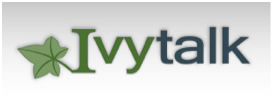 Let me begin by voicing my passion for paging. Paging is the only true broadcast data messaging in use. Paging’s superior coverage and incredible efficiency in its ability to deliver mass outbound notifications remains unmatched by today’s systems. We all know that while paging has continued to decline in its overall use worldwide, users have been barraged by many alternatives in the messaging space including IM (instant messaging), SMS/Text, e-mail, IP push notifications (mobile applications), etc. The ideal system would embrace all of these, allow people to communicate in their preferred way and provide a simple interface for the businesses to reach out to people, hiding all the complexities of interfacing to the increasing number of messaging networks. This is Ivytalk®, a hosted messaging network solution for businesses and organizations of any size. Ivytalk sets a new standard in flexibility and scalability allowing companies and groups to communicate and interact with their customers, employees, partners, vendors, members, volunteers and the media.
Let me begin by voicing my passion for paging. Paging is the only true broadcast data messaging in use. Paging’s superior coverage and incredible efficiency in its ability to deliver mass outbound notifications remains unmatched by today’s systems. We all know that while paging has continued to decline in its overall use worldwide, users have been barraged by many alternatives in the messaging space including IM (instant messaging), SMS/Text, e-mail, IP push notifications (mobile applications), etc. The ideal system would embrace all of these, allow people to communicate in their preferred way and provide a simple interface for the businesses to reach out to people, hiding all the complexities of interfacing to the increasing number of messaging networks. This is Ivytalk®, a hosted messaging network solution for businesses and organizations of any size. Ivytalk sets a new standard in flexibility and scalability allowing companies and groups to communicate and interact with their customers, employees, partners, vendors, members, volunteers and the media. 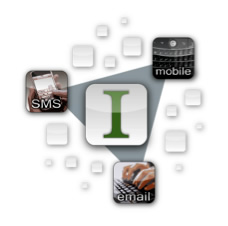
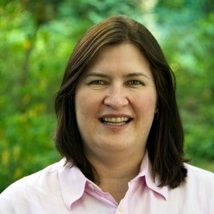 Ms. Jesse is a seasoned technology and business professional with 25 years experience in product development and delivery. She holds Bachelors and Masters Degrees in Electrical Engineering and is listed as an author on more than 12 U.S. and International Patents.
Ms. Jesse is a seasoned technology and business professional with 25 years experience in product development and delivery. She holds Bachelors and Masters Degrees in Electrical Engineering and is listed as an author on more than 12 U.S. and International Patents. 






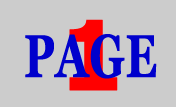





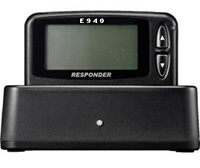















 Silent Call Communications has an updated Baby Cry Monitoring Kit available. The kit includes a Good Vibrations Receiver, Sound Monitor Transmitter and a battery charger. The Baby Cry Monitoring Kit provides comfort for when a person needs to go out to the backyard, get their mail, is in a noisy setting, or falls asleep and wants to be aware of their child awake or crying.
Silent Call Communications has an updated Baby Cry Monitoring Kit available. The kit includes a Good Vibrations Receiver, Sound Monitor Transmitter and a battery charger. The Baby Cry Monitoring Kit provides comfort for when a person needs to go out to the backyard, get their mail, is in a noisy setting, or falls asleep and wants to be aware of their child awake or crying. 